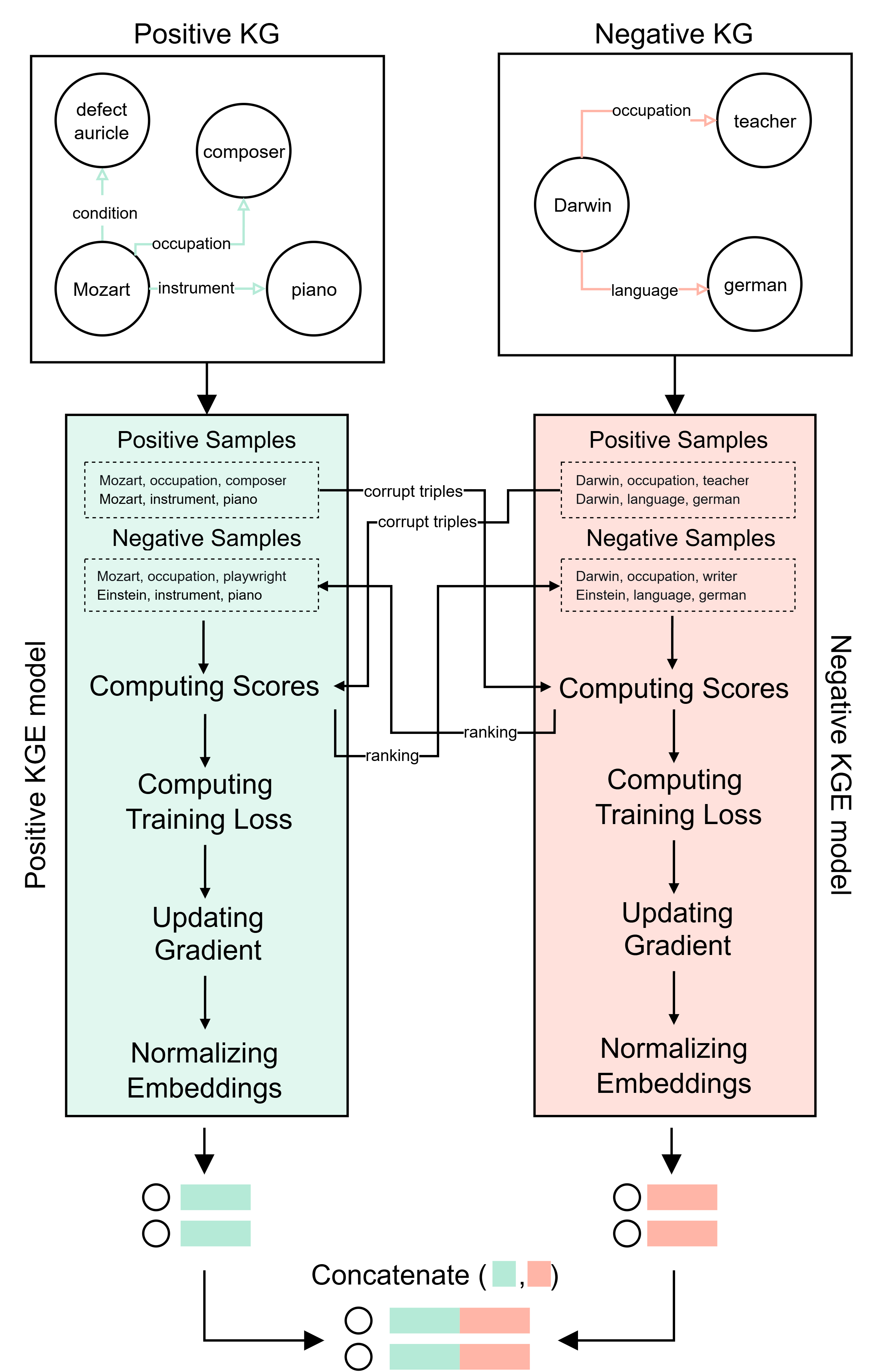Improving Knowledge Graph Embeddings through Contrastive Learning with Negative Statements
- Conference/Journal: Accepted at K-CAP
- Year: 2025
- Full paper URL: https://arxiv.org/abs/2510.11868
Abstract
Knowledge graphs represent information as structured triples and serve as the backbone for a wide range of applications, including question answering, link prediction, and recommendation systems. A prominent line of research for exploring knowledge graphs involves graph embedding methods, where entities and relations are represented in low-dimensional vector spaces that capture underlying semantics and structure. However, most existing methods rely on assumptions such as the Closed World Assumption or Local Closed World Assumption, treating missing triples as false. This contrasts with the Open World Assumption underlying many real-world knowledge graphs. Furthermore, while explicitly stated negative statements can help distinguish between false and unknown triples, they are rarely included in knowledge graphs and are often overlooked during embedding training.
In this work, we introduce a novel approach that integrates explicitly declared negative statements into the knowledge embedding learning process. Our approach employs a dual-model architecture, where two embedding models are trained in parallel, one on positive statements and the other on negative statements. During training, each model generates negative samples by corrupting positive samples and selecting the most likely candidates as scored by the other model. The proposed approach is evaluated on both general-purpose and domain-specific knowledge graphs, with a focus on link prediction and triple classification tasks. The extensive experiments demonstrate that our approach improves predictive performance over state-of-the-art embedding models, demonstrating the value of integrating meaningful negative knowledge into embedding learning.
